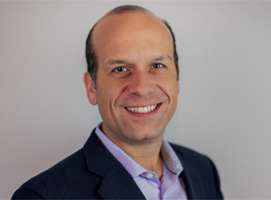enrollment
SEO Action Planning for Higher Education: 6 Steps to Getting Started

Over the last decade, it has become clear that organic leads convert to applicants, admits, and enrolled students at the highest rates, and are therefore the most highly coveted of all the lead sources. And as I have moved between working at institutions and consulting with institutions, I have encountered a huge proportion of schools not investing nearly enough in more effectively driving organic traffic to and through their website. They don’t see the value in and investment required for effective SEO for higher education institutions.
When you consider that organic leads convert at the highest rates across all types of students—traditional undergraduates, adults, online students, or graduate students (albeit converting online and graduate students at seven times any other lead source among RNL’s partner set)—it is clear that institutions need more focus in this domain. Why?
- More than 50 percent of all higher education website traffic comes from search engines.
- More than 75 percent of students search using program name and outcomes instead of not institutional brand.
- 77 percent of students will use search engines even when they know which school they want to look up.
For those schools employing a solid SEO strategy, you are not only bolstering the health of your funnel, but you have a significant competitive advantage over the majority of your competitors. For those institutions who aren’t, you’ve got to get on this. SEO is not an option but a required component that needs to be continually attended to, invested in, tracked, and updated in order to provide organic traffic that is critical to enrollment health.
Effective SEO for higher education requires a plan that is uniformly adhered to, continually assessed, regularly updated and constantly managed. Too many institutions see SEO as an ‘event’ rather than a process. When I am on a campus visit, and ask about SEO, I often hear, “We just did SEO earlier this year”, or “We plan on doing it again soon.” These responses demonstrate a lack of understanding that SEO is a constant necessity rather than a static exercise. It takes a team dedicated to the continual development, evolution, and adherence to an on-going plan.
This investment requires team members with the expertise and skills to develop—and bandwidth to manage—a strategy on an on-going basis. The first key step is to develop a plan. The plan not only sets a path for the SEO team but also helps prioritize where and how these efforts are employed. So what’s in the plan? The following are the key elements of RNL’s SEO Action Plan:
Step 1: Assess
This first step is vital. You must assess current performance. Benchmark your overall visibility on organic sessions and search engine ranking performance for highly searched keywords. Knowing how you rank provides you with visibility, not only on how you are performing but also on how you stack up against competitors. You should also begin to identify the program pages in which you want to initially invest. The goal should be to move each to page one of a Google search. With this initial assessment you begin to understand:
- Which keywords you may not be employing.
- How your institution has been messaging each of the programs.
- The impact (positive or negative) your messaging has had in driving organic traffic to your website and program pages.
Step 2: Prioritize
SEO for higher education is not an inexpensive proposition. The amount of time, effort, and overall investment necessary to drive an SEO plan means that most schools need to go through a prioritization exercise. Identify home pages, key enrollment pages, and especially program-specific pages where there is the greatest opportunity for growth and enhanced traffic. Establish a content strategy based on enrollment goals, current trends. and potential organic lift. An institution does not need to optimize every program, but should implement SEO for programs with the most potential, or those that are poised—based on Step 1—to move into a higher search engine ranking.
Step 3: Assign
As already mentioned, SEO requires a dedicated team that ensures the institution is managing SEO as a process and not a one-time event. Identify resources for management of the SEO strategy and plan as well as those individuals who will be key in content development. This team will not just be involved in optimizing the pages identified during the prioritization exercise, but will also be responsible for monitoring performance, and adjusting and updating on a continuous basis. This is not an effort leadership can hand off to a team as part of an additional project—this is a full time job.
Step 4: Research and Write
The assigned team should then begin to embark on market research to better understand market perception of the prioritized programs. Use primary and secondary data sources, along with interviews with key stakeholders across campus, to inform the development of keyword-driven/ benefits-focused content for both programmatic and enrollment-focused landing pages. Content must effectively communicate both the features and benefits of each program (and the institution). This is because:
- Content is an important factor in Google’s algorithm that can positively/negatively impact your search engine ranking
- Once you draw organic traffic in, you must ensure that you are effectively attracting, educating, informing, and influencing that individual to take the next step in the process. This can only be done with clearly articulated value propositions.
Step 5: Fix
Beyond content, you must consider the technical and performance-based challenges your site (and the specific pages you are optimizing) may have. Do the pages render correctly? Do you have loading speed issues? Are you optimized across all devices (mobile, tablet, PC)? Google now intentionally factors how quickly/smoothly your page loads, how responsive your page is, and how easy it is to navigate on your website—no matter the device. How you manage these issues will have a direct impact on search engine optimization and ranking. We also know that the buying behaviors of prospective students do not include the virtue of patience. The average student will abandon a search if they cannot find what they need (quickly) within 3 clicks.
Step 6: Extend
Once your optimized site is live, the SEO team will need to continually analyze performance—not only against your baseline, but also against competitors. You need to make sure that your efforts are producing the gains you expect against both internal and external performance and trends. This requires ongoing work, analysis, tweaks, adjustments, and overall effort to ensure that you are truly/continually optimized. Some of the additional work and investments may include developing content marketing material where you answer key enrollment questions around common concerns related to one or more of your programs, and/or further extending SEO to additional programs beyond the first prioritized group.
SEO is not a quick fix or answer to all funnel concerns and issues, but it is an investment that pays dividends over time. It takes time for SEO to take effect. Consider that the background work you do will require about three months, and once live it will take search engines (i.e. Google) up to six weeks to recognize the changes. If you are looking for quick wins, this is not the answer—but if you are in search of sustainable growth, SEO is a must. Some readers may have neither the bandwidth nor skill-set needed to establish a long-term commitment to SEO on campus. If you do not, then look for a trusted partner. RNL has worked with hundreds of institutions to help them establish a far more robust comprehensive lead generation strategy—that includes solid, best-in-class SEO. We would be happy to speak with you—whether to provide high level guidance as you move forward on SEO internally, or act as an extension of your team to optimize key webpages on your site to drive organic lead growth.
Talk with our digital and enrollment experts
We’re to help you find the right digital marketing and recruitment strategies. Let’s set up a time to talk.
